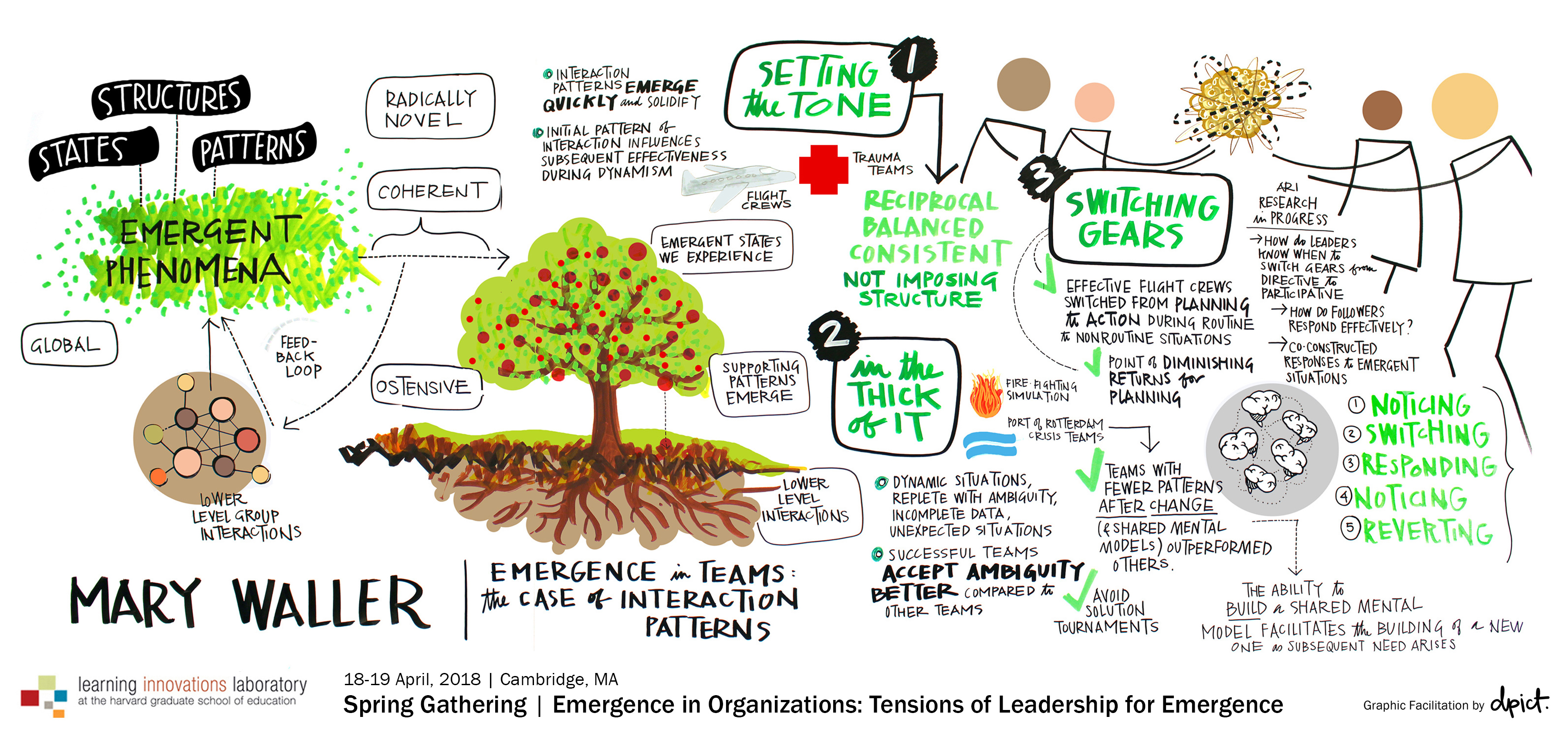 Mary has studied what makes teams effective in a variety of dynamic contexts, such as flight crews, nuclear power plant engineers, hospital trauma teams, fire-fighting teams and emergency crisis teams. In her studies of interaction patterns she has identified some key lessons for leaders to keep in mind:
Mary has studied what makes teams effective in a variety of dynamic contexts, such as flight crews, nuclear power plant engineers, hospital trauma teams, fire-fighting teams and emergency crisis teams. In her studies of interaction patterns she has identified some key lessons for leaders to keep in mind:
- Setting the tone: interaction patterns emerge quickly and solidify. Initial patterns of interactions influence the subsequent effectiveness during dynamism. Teams that had reciprocal, balanced and consistent interaction patterns performed better in highly adaptive situations.
- In the thick of it: when teams face ambiguity, uncertainty, and incomplete data effective teams accept ambiguity better and avoid “solution tournaments.” Teams that have fewer entrenched interaction patterns were able to drop routines and adjust more effectively than teams that had more.
- Switching gears: Planning happens during routine activities, or “slack time”.” However, too much planning time isn’t effective — there is a sweet spot.
Her current research in military settings is now looking at how leaders switch gears from being directive to participative.
